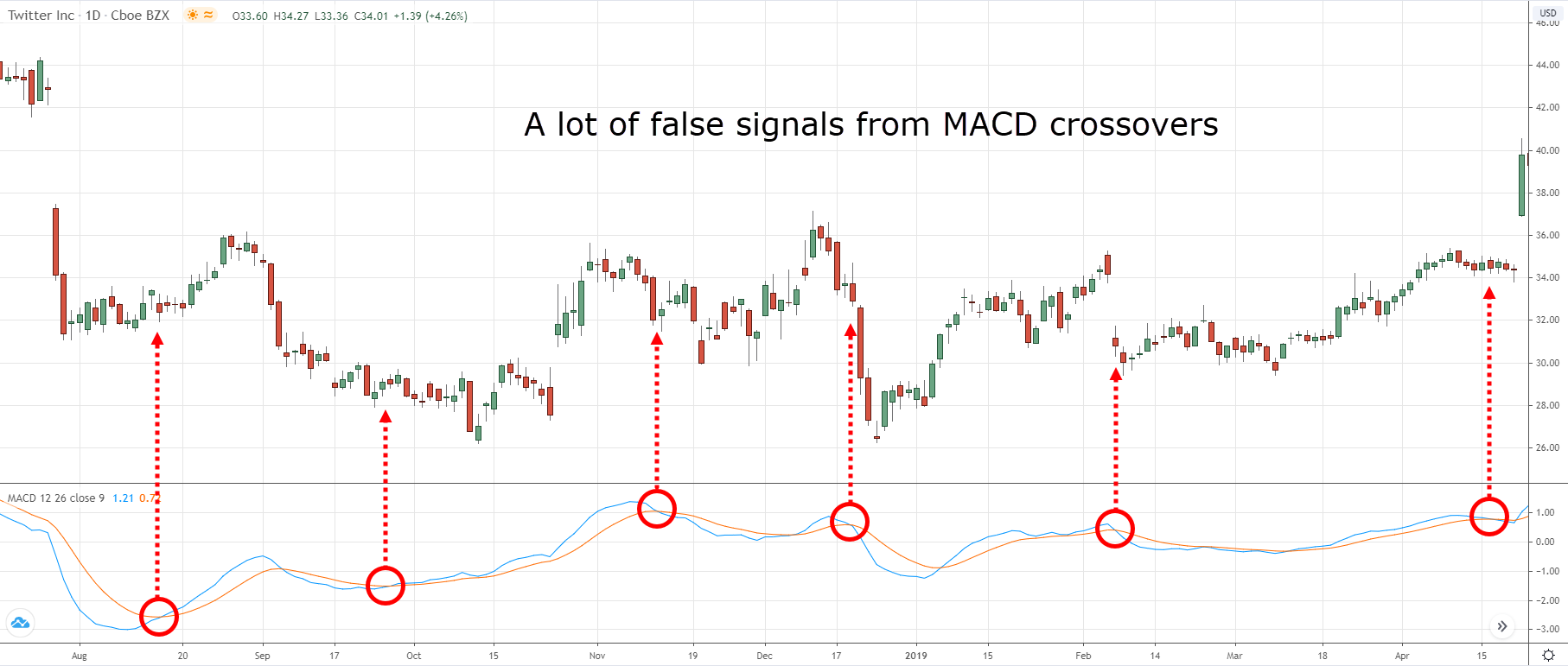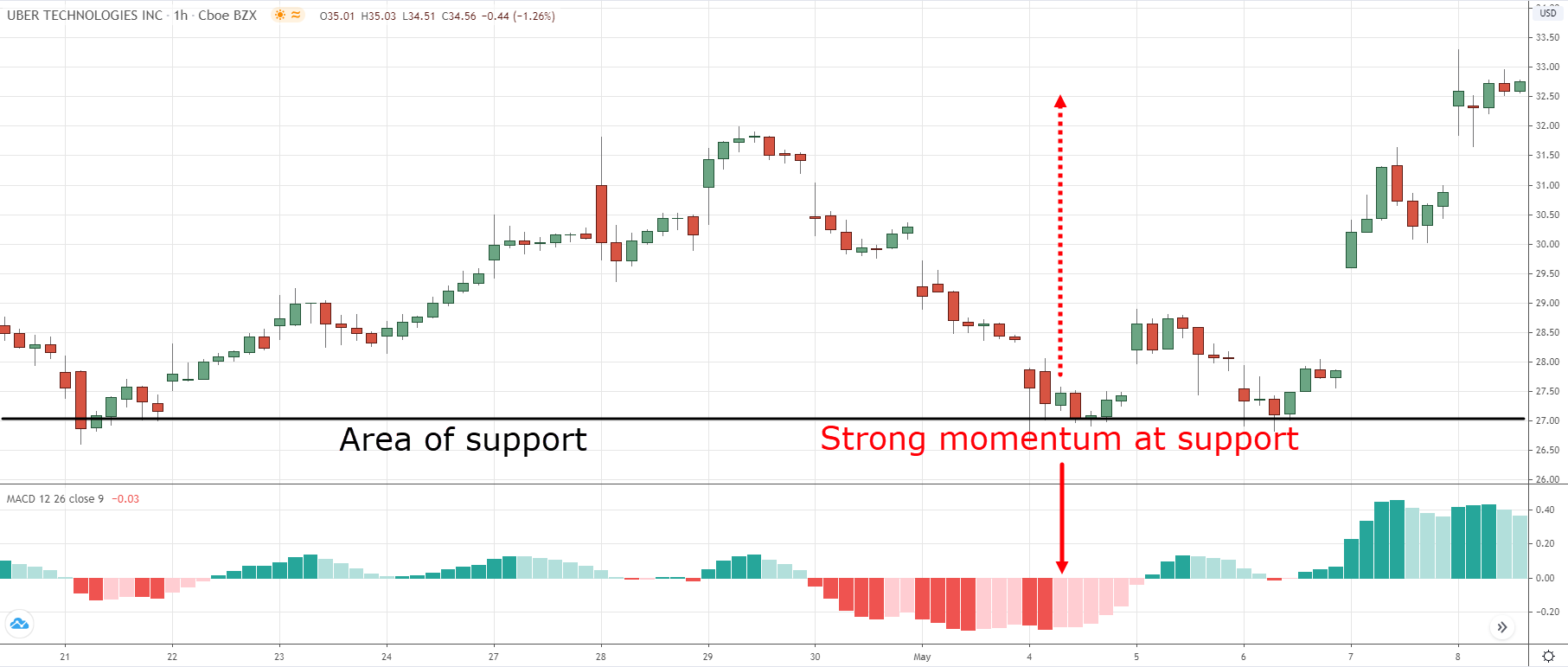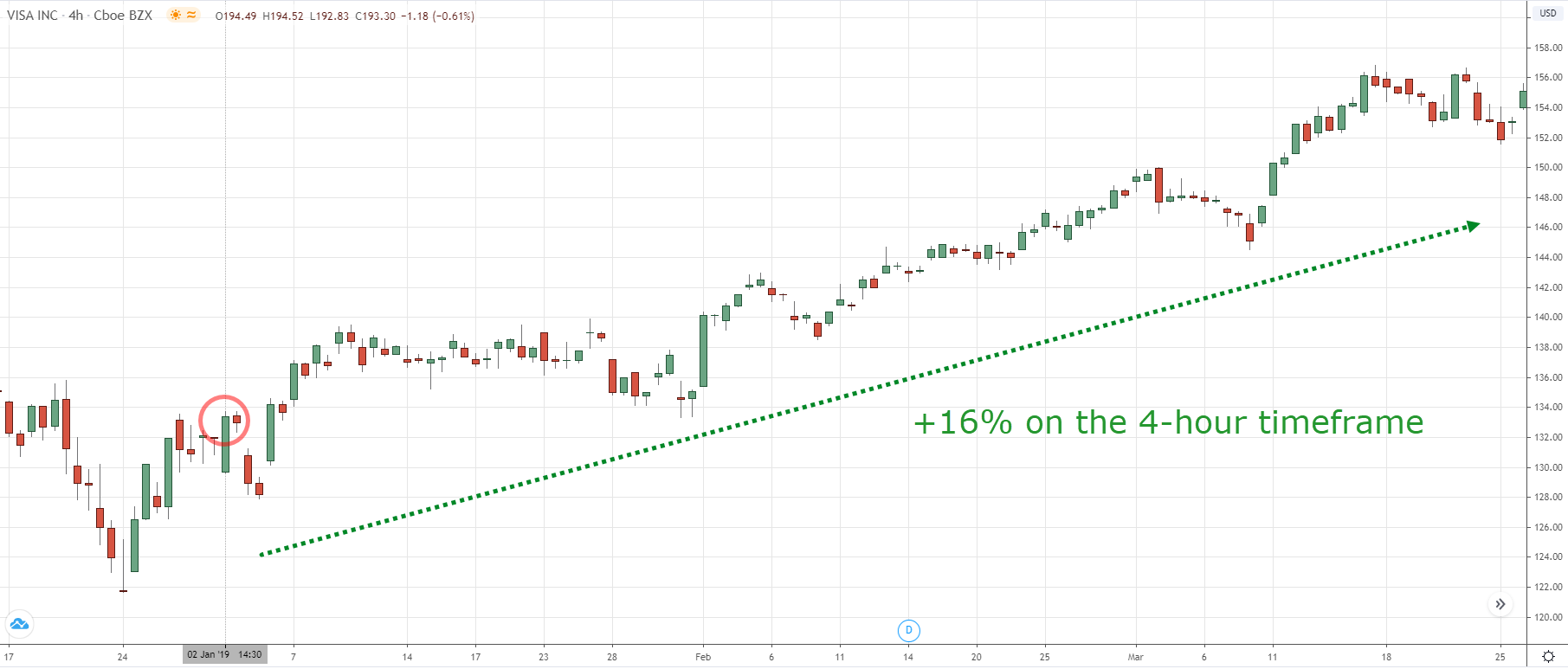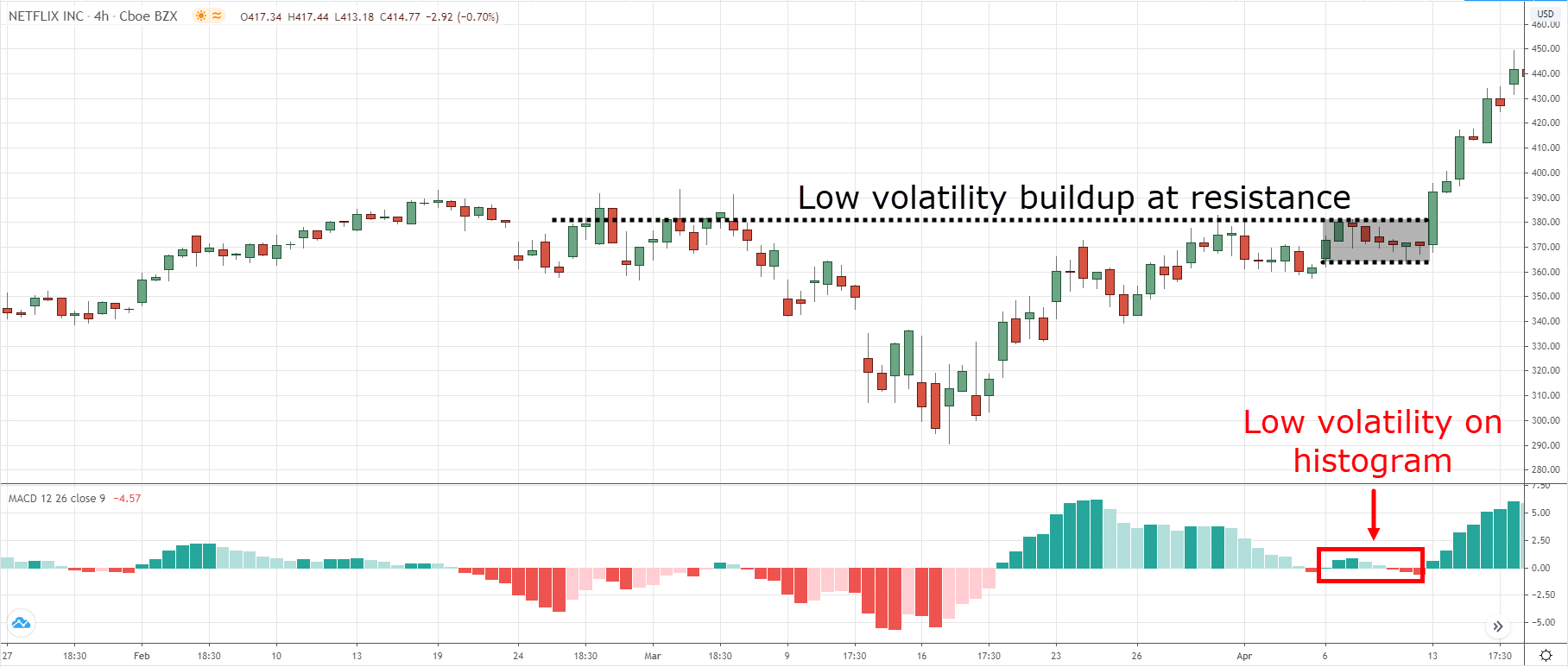This won’t be the usual MACD indicator stuff you see online.
I won’t tell you to…
- Look for a MACD Divergence
- Wait for a MACD Crossover
- Wait for the MACD Line to cross above 0
Here’s why…
The MACD is just like any other indicators — it’s NOT meant to be traded in isolation.
If you want to use the MACD indicator successfully, it must complement the price action of the markets.
You’re probably thinking:
“Err… so how do I do it?”
Well, you’re in the right place because you’ll discover…
- What is the MACD indicator and how does it work?
- Common Mistakes: How not to use the MACD indicator
- How to use MACD histogram and identify momentum reversal
- MACD Indicator: How to use it and increase your winning rate
- MACD Histogram Squeeze: How to identify explosive breakout trades about to occur
Or if you prefer, you can watch this training below…
MACD Indicator: What is it and how does it work
The Moving Average Convergence Divergence (MACD) indicator is a momentum and Trend Following indicator developed by Gerald Appel.
Here’s the MACD formula:
MACD Line: (12-day EMA – 26-day EMA)
Signal Line: 9-day EMA of MACD Line
MACD Histogram: MACD Line – Signal Line
Now…
You’re probably thinking:
“It’s too complex and I don’t understand what it means.”
And your brain shuts down.
But wait.
Hang on.
Don’t run away.
Because I’m about to break down the MACD formula step by step — that even a 10-year-old can understand.
Sounds good?
Then read on…
Demystifying the MACD indicator step by step
Now some of you might wonder:
“What’s the best MACD settings?”
Well, there isn’t the best setting because it doesn’t exist.
And for this post, I’ll use the default settings on MACD.
With that said, let’s break down the MACD indicator (step by step).
It’ll be easy, I promise.
#1: MACD Line
All you need to do is take the value of the 12-day EMA and minus against the 26-day EMA (you can find it on your charts with zero calculations).
And poof!
That’s your MACD Line.
Here’s an example:
I told you it was easy, right?
#2: The Signal Line
This gets even easier.
Just take the historical value of the MACD Line and divide by 9.
And that’s it — you’ve got your Signal Line.
Here’s an example:
Let’s say you have a MACD Line of these values…
1, 2, 3, 4, 5, 6, 7, 8, 9
Add the numbers up (which is 45) and then divide by 9.
So, you’ll get 45/9 = 5
Next…
#3: MACD Histogram
This is so easy (it’s laughable).
Just take the value of the MACD Line and minus against the Signal Line.
Tada!
That’s your MACD Histogram.
Here’s what I mean…
Now you might be wondering:
“So, which is the best MACD indicator settings?”
Here’s the deal:
There’s no such thing as a best MACD settings because the market is always changing.
What works best right now is unlikely to work the same in future.
So, the important thing isn’t to optimize for the best MACD indicator settings — it doesn’t exist.
Instead, you should understand the concept behind MACD so you can use it to meet your trading needs.
Does it make sense?
Then let’s move on…
Common Mistakes: How NOT to use the MACD indicator
Now…
Let me share with you 2 common mistakes traders make when using the MACD indicator.
They are:
- Trading the MACD crossover
- Misinterpreting the MACD histogram
Let me explain…
Trading the MACD crossover
This technique might work in strong trending markets.
But remember, most of the time the markets are in a range.
This means the MACD crossover will give many false signals that lead to “death by a thousand cuts”.
An example:
Now, there are better ways to use the MACD crossover (but more on that later).
Next…
Misinterpreting the MACD histogram
Look at the MACD histogram below:
You’re probably thinking:
“There’s strong momentum in the move. It’s time to buy!”
Wrong!
Because when such a move occurs, it’s usually too late to enter, and the market is likely to reverse.
Instead, a better approach is to go against the momentum — and trade the reversal.
Here’s how…
How to use the MACD histogram and identify momentum reversal
When I first started trading, I like to “chase” breakouts.
The more bullish the candles, the likelier I’ll buy the breakout.
However…
I was bleeding my account.
That’s when I realized I entered my trades “too late”.
I bought when the price is about to reverse in the opposite direction.
And this led to an AHA moment.
I wondered…
“What if I stopped chasing breakouts?”
“What if I took the opposite side of the trade?”
“What if I look to short when there’s strong bullish momentum?”
It worked much better!
However…
I had trouble explaining to traders what strong momentum is.
So…
That’s where the MACD histogram comes into play.
Here’s how it works…
1. Wait for the price to come into Market Structure (like SR, Trendline, etc.)
2. MACD Histogram shows strong momentum (you want to see a high peak/trough)
3. Wait for price rejection before trading in the opposite direction
Here’s an example:
MACD Indicator: How to use it and increase your winning rate
The concept is simple.
We’ll use the MACD indicator to define the higher timeframe trend, and then trade in the direction of it.
Here’s how it works:
- Define your higher timeframe (HTF)
- If the HTF MACD Line crosses above Signal Line, then look for long setups (on your entry timeframe)
- If the HTF MACD Line crosses below Signal Line, then look for short setups (on your entry timeframe)
I’ll explain…
Define your higher timeframe
Let’s say your entry timeframe is 4-hour, then your higher timeframe is the Daily.
Or, if your entry timeframe is the Daily timeframe, then your higher timeframe is the Weekly.
Your higher timeframe can be anywhere between a factor of 4–6 of your entry timeframe.
If the higher timeframe MACD Line crosses above Signal Line, then look for long setups (on your entry timeframe)
An example:
If the higher timeframe MACD Line crosses below Signal Line, then look for short setups (on your entry timeframe)
An example:
MACD Histogram Squeeze: How to identify explosive breakout trades about to occur
Here’s a fact:
Explosive breakouts usually occur when there’s low volatility in the market — you’ll notice the range of the candles gets small and “tight”.
But if you’re a new trader, this might not be easy to spot.
So, that’s when the MACD Histogram can help you.
Here’s how…
1. The price comes into key Market Structure (like SR, Trendline, etc.)
2. The MACD Histogram looks almost “flat” without any visible peak/trough
3. Enter the breakout when the price breaks the Market Structure
Here are a few examples:
This is powerful stuff, right?
Now you might be wondering:
“For how long should the MACD histogram be flat?”
There are no fixed rules here.
But generally, I’d like to see it flat for a minimum of 5 candles (or more).
Because the longer it remains flat, the likelihood of a stronger breakout.
Conclusion
So here’s what you’ve learned today:
- The MACD is a Trend Following and momentum indicator
- Don’t “blindly” trade the MACD crossover, it’s a losing strategy. Instead, use it as a trend filter so you can increase your winning rate
- You can use the MACD histogram to “predict” market reversals — look for a strong move into Market Structure followed by a price rejection
- When the MACD histogram is flat, it signals the market is ready for a breakout
Now here’s a question for you…
How do you use the MACD indicator?
Leave a comment and share your thoughts with me.














i left macd indicator 1 year ago because always lost, this looks promising
Do give it another shot!
But do the testing yourself first of course!
What about divergence macd.
Hey there Sia, we find that divergences does not have a definite edge in the markets, which is why we focused more on the practical and mathematical use of the indicator!
I am confused about the entry timeframe. If I am doing day trading or swing trading, which timeframe chart should I be using?
MACD tend to confuse me.
Hey there Sandra, the key here is to choose a timeframe you think you can be consistent with as there’s really no “best” timeframe but the best for you!
I use macd next time
And go on results
Awesome, do update us!
U r genius 👏 sir u r best mentor
Thank you Vishwanath!
Isn’t the position of the MACD line in relation to the zero line on the current timeframe indicative of the trend bias, or have you in fact found it to be more reliable to check for the signal-line crossover on the higher timeframe?
Thanks in advance!
Hey there Randall, the thing here is that there’s no such thing as an “effective higher timeframe”
Each timeframe has its own behavior, and it takes time for one trader to know each of them
So the key here is to choose a timeframe you know you can consistently commit to, if it’s compatible with you, you’ll find effectiveness to it no matter what tools you use!
I use simple divergence on the lines showing a trend reversal or a pull back
Thanks for sharing, Alina!
For trend reversals and market breakouts…but just for a clear confirmation as it’s an indicator ( shows past events) in a clearer picture
Thanks for sharing Keran!
Dear Mr.Teo,
I have used MACD indicator while doing the paper trade & THANK GOD ,I was able to protect my funds.Honestly i haven’t used MACD indicator in real because the results were not promising.I would definitely want to try the fundamentals you have just taught us.Sir can the same technique can be use for smaller time frame as i am still a learner and trying to sharpen my skills @ 15mins & 30 mins time frame.Can you give me your best advice on the same.
Regards
Ankit
Hey there Ankit, Congratulations on your progress.
Keep it up and stay consistent!
Thank you. I had to watch the video twice to understand what I was reading. This is a blessing
Great to hear that, Michael!
Macd work good with Keltner chanel
Thanks for sharing, Mazen!
I used it wrongly just after seeing the crossovers… And I really got burned…
I hope that this guide helps you out, Malaya!
Make sure to practice risk management!